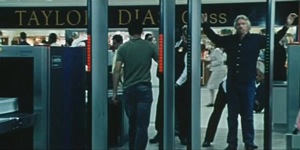Travel Photo Tips
categories: Uncategorized
- Camera Advice: First you need a film or digital camera, or a video camera that does stills (or dare I say a camera phone, which are actually getting much better). Two great resources for reviews on digital cameras are www.imaging-resource.com and www.dpreview.com. Digital SLRs (Single Lens Reflex Cameras) are more affordable than ever, and many are available for under $1000 including a zoom lens.
- Bring extra batteries: One of the things that can put a damper on your day is to arrive at the summit of Haleakala in Maui or Mt Fuji and have no batteries left. I recommend having one or two spare batteries for all the cameras you own. Also, if you have two cameras, I recommend buying cameras that use the same batteries if possible.
- Bring extra media cards and use the same format card between cameras. Many still cameras and video cameras use the SD card format and by using the same format, you can share cards between two cameras.
- Choose a camera with a good zoom lens or use a zoom on a DSLR. Zoom lenses will allow you much more flexibility wherever you go.
- Ziplock brand bags and plastic food containers are fantastic for keeping cables organized. You can avoid creating a rat’s nest of wires by using plastic bags and twist ties for each of your power cables or charger. The gallon-size bags are great for protecting cameras and larger lenses.
- When traveling to a country with different voltage and/or plugs, bring a 4 or 5 port power strip with a voltage converter or transformer for your gear.
- Get a good photo backpack. I recommend those that look like student backpacks so that you don’t attract too much attention. One that I really like is the Lowepro CompuDaypack.
- Bring a tripod. It doesn’t matter where you go, a tripod-even a small one, will help you to make great photos of night scenes, or you can set them to self timer and photograph yourself or friends. There is a cool new product for lighter cameras called the Quickpod that allows you to take photos of you and/or a few of your loved ones without handing the camera over to someone you don’t know. Pedco has some very compact tripods for small cameras and cell-phones, and Joby makes the Gorillapod tripods.
- Take a few more photos than you need. Pros might shoot a hundred to get one good one, so if you see something really impressive, take a few extra photos.
- Use your fill flash to improve your photos. Virtually all cameras with a flash have the ability to turn on the fill flash, which will give your subjects a very nice light. The sweet spot will usually be from about 4 to 12 feet from your subject. Flash Exposure Compensation is available on more advanced cameras, so you can tone down the brightness.
- Number one creative tip (in my opinion): Use Aperture Priority. Many cameras, even point and shoots have a setting called Aperture Priority. The aperture on lenses is generally between f2.8 and f22.
- Think cinematically – like a director of photography on a movie. Also think like a director of photography on a movie; Do an exercise whenever you can that includes a few wide angle zoom shots (such as 24mm in the 35mm format), a few medium zoom shots (about 80mm), and more zoomed-in (or telephoto) shots (about 150-200mm).
- Share your photos. There are many ways to share photos with friends and family online. You can upload them to a blog like blogger.com, or you can create a free account at Flickr, Photobucket, Shutterfly, or Kodakgallery.com. Picasa is a good choice for both desktop and online photo management if you are on a Windows machine.
- Make a book and/or a scrapbook. You can also make softcover or hardcover books through Apple iPhoto or a great company called blurb.com, which has Mac and Windows software for their affordable and beautifully printed hard cover books. I’d also like to recommend a podcast called the Scrapcast. The host, Lynette, covers virtually every aspect of making scrapbooks, which are great ways to preserve memories.
- And a bonus tip that was not in the podcast: Adjust your camera’s diopter. Many still and video cameras have a little adjustment knob or slider next to the viewfinder to adjust for differences in human vision (like corrective eyeglasses). I suggest putting the camera on a tripod and auto focusing on something like a photo in a frame on a table. Then adjust the diopter until the image is in sharp focus. You will then be able to switch to manual mode at times and have an accurate view, even if you wear glasses.
Enjoy your travels!
Andrew Darlow is a photographer and digital imaging consultant based in the New York City area. He is editor of The Imaging Buffet, an online resource with news, reviews, and podcasts covering the subjects of digital photography, printing, and imaging. His forthcoming book, 301 Inkjet Tips and Techniques: An Essential Printing Resource for Photographers (published by Thomson/Course Technology), covers a wide range of digital printing topics, and contains many of his travel photographs from around the world. His Inkjet & Imaging Tips Newsletter is available free to subscribers on his website, www.imagingbuffet.com.
- Get a Car Rental
- Search for Great Tours HERE
- Buy Travel Insurance
- Book Your Accommodation HERE
+Chris Christensen | @chris2x | facebook
One Response to “Travel Photo Tips”
Leave a Reply
Tags: article, photography, photography tip, travel photography

 Travel Photography Tips – Episode 88
Travel Photography Tips – Episode 88 Finding The Best Camera for Travel Photography
Finding The Best Camera for Travel Photography iPhone gets HDR Photos
iPhone gets HDR Photos 17 Tips for How to Take Better Food Pictures for Instagram or Your Blog
17 Tips for How to Take Better Food Pictures for Instagram or Your Blog

Thad Flippen
Says:December 4th, 2010 at 9:00 pm
Hello, Straight to the point post you made. Are you able the explain more in your next posting. I’m very interested in digital photography as well and would really appreciated some extra infomation.
Kind Regards
Thad Flippen